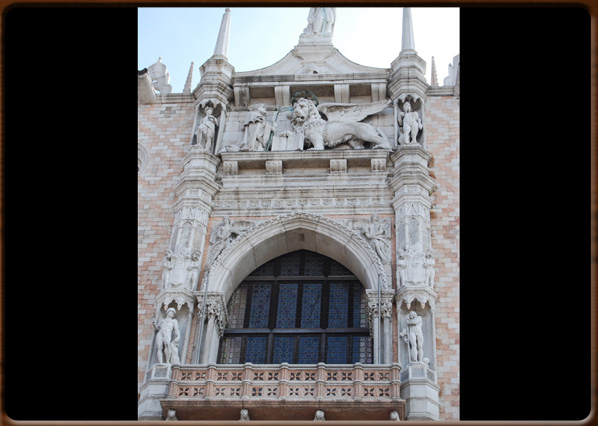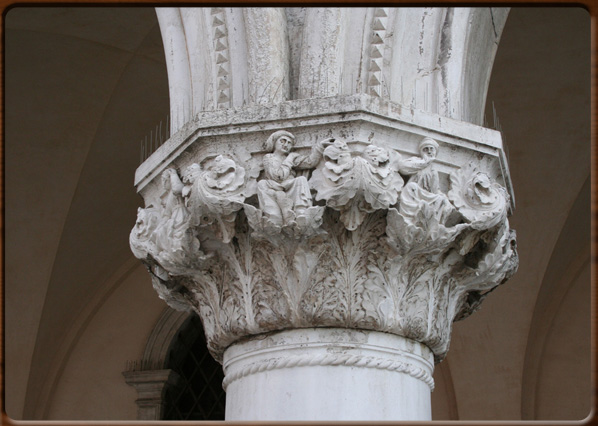In 810 the Doge Angelo Partecipazio moved the seat of government from Malamocco to Rialto.
In the early 9th Century, as Venice began to turn into a city, the decision was taken build the palatium duci (Doge’s Palace): a fortress palace later destroyed by a series of fires. Works on the "Palazzo Ducale" as we see it today began in around 1340 under the Doge Bartolomeo Gradenigo. The first people to be involved included the architect Pietro Basejo and the painter Guariento from Padua. The designers broke with tradition and built the façades in pink Verona marble on Istria stone arches with a portico supported by columns.
A masterpiece of Gothic art, the doge’s Palace consists of three large buildings that incorporated and linked up previous buildings: the wing facing St. Mark’s Basin (containing the Sala del Maggior Consiglio and the seat of government), rebuilt in 1340 onwards; the wing facing the square (formerly Palazzo Giustizia) with the Sala dello Scrutinio, building starting in 1424; and on the opposite side, the Renaissance wing forming the Doge’s residence and many government offices, rebuilt between 1483 and 1565. A serious fire in 1574 inside the building destroyed all the valuable paintings that had been accumulated by that time.
The prestige of this building clearly influenced civil architecture in Venice: the geometric intertwining of Arab/Muslim style windows of origin was merged with traditional local lines to create the façades of the palaces still lining the Canal Grande.
The main function of the Doge’s Palace – the heart and symbol of Venice’s political and administrative power – ended in 1797, the year that the Venetian Republic fell.
Today the doge’s Palace can be visited, now being the Palazzo Ducale Museum.







